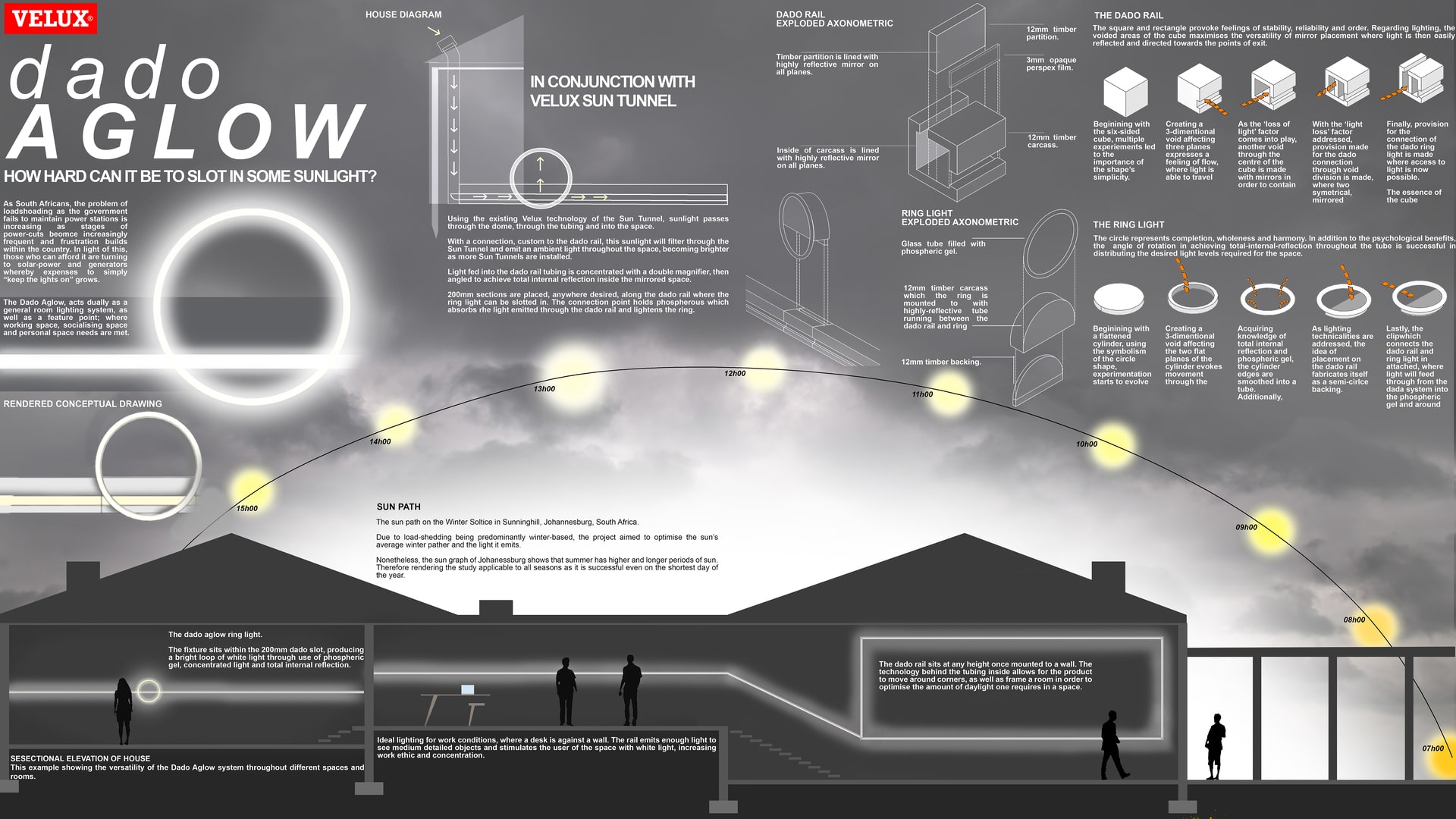Project Description
In investigating methods in which daylight could be non-electronically transferred throughout a space, the Dado Aglow system has been conceptualized allowing natural light to both travel through and enlighten a dark internal space. Contextually, the need for a natural light in South Africa has been essential in past years, where the demand for electricity grows - and, the unfortunately corrupt, electricity provider, Eskom struggles with the upkeep of legal power distribution nation-wide. As a result, a large percentage of the population are left without necessary light when aiming to complete everyday tasks; such as house-care, business operations and educational activities. Here the Dado Aglow proves its necessity. The Dado Aglow is a modular system which, through the use of achieving total internal reflection, transfers light across a thin tube where it is dimly distributed with allowance for a connection of a brighter work orientated lighting module. The sunlight is captured through the existing 'Sun Tunnel' which has been altered to connect to the Dado Aglow. Using these two products in conjunction with one-another, one is able to light an internal space with soft, ambient light - as well as a work space with a brighter, diffused light. The technicalities behind the Dado Aglow include a myriad of concluded designs which optimize the transfer of natural light through temporary capture and release. The lighting system makes use of acrylic tubing that has been finished with a semi-reflective vinyl, effectively keeping approximately 75% of the light within the tube and dispersing 25% through an opaque acrylic sheet situated towards the front of the dado rail. Measured occurrences along the rail allow for the attachment of the loop fitting - which is the component of Dado Aglow allowing for the appropriate brightness of a workspace, around 3000 lumens which fits within the required light output for a work environment. This component connect through a slit containing angled mirrors obtaining total internal reflection throughout a circular 'light ring' manufactured from acrylic tubing and filled with luminescent phosphorous which allows for a prolonged glow after the sun has gone down and/or little natural light is achieved due to either the moon, pollution or overcast weather. This solution to natural internal lighting has been brought to debate and question among anonymous South African citizens living in poor developments and who often experience power failures or simply can't afford electricity that Eskom provides. This solution, although using advanced technology - could be altered to benefit those who are not able to work in both residences of business environments due to the lack of power. Using the Velux technology of sun-tunnels as an initial driver, the technology could be developed to provide low-cost solutions to those in need and allow those less fortunate the modern-day-right to electricity. Statistically, if light could be brought into the homes of Government Subsidy Housing (RDP housing) across South Africa - over 1.1 million people people could benefit from alleviating their electricity tax substantially. This ultimately could lead to a happier and more productive nation where the regular frustration of little fluctuating power instability becomes irrelevant to lighting an internal space when the sun is up.
